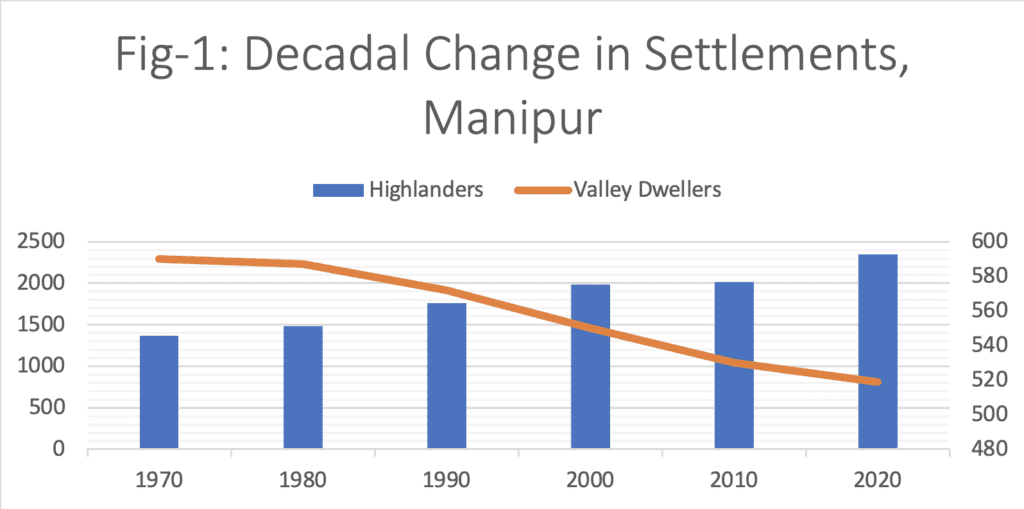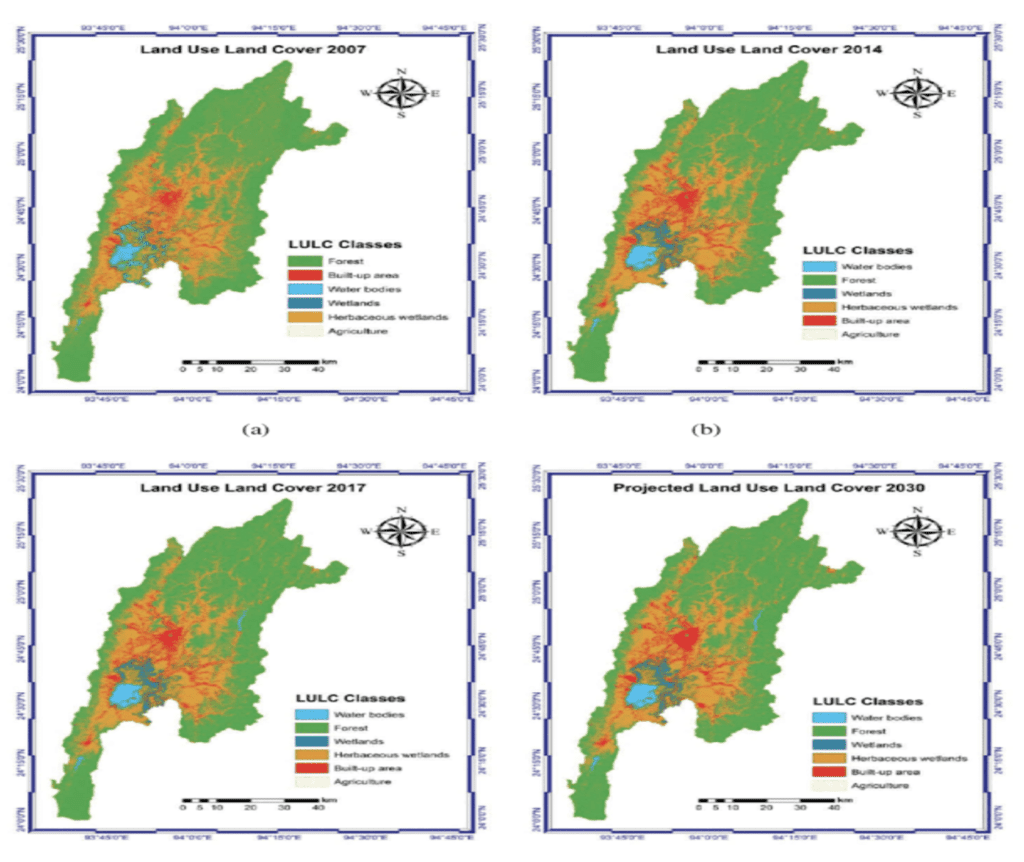Intense violence in Manipur, India, represents the latest ethnic clash and community conflict in the fragile Himalayan terrains of South Asia. Although the cause of this unrest – and other conflicts before it – appears to be the politics of territorial control over agricultural and ecological resources in the region, its roots can actually be traced back to the climate change impacts that threaten food, water and livelihood security of indigenous communities.
Studies endorse that the climate crisis triggered societal conflicts in South Asia, causing fatal political upsurges between 2015 and 2020, before they were partially doused by the pandemic.
Bangladeshi agrarian communities from villages vulnerable to coastal flooding relocated close to urban cities and aggressively competed for diminishing resources. Many of these climate refugees also crossed Indian borders to survive and thus escalated religious separatist motives along the northeastern border of India and Bangladesh.
Such socio-ecological skirmishes happened earlier in 2007 and 2008 as well. These were between the indigenous Nepali Madhesi communities and Indian marginal agrarian farming and fishing communities, taking place along the Indo-Nepal borders and pertaining to the territorial issues on the Kalapani river.
Socio-political indifferences towards the rights of these ultra-poor agrarian communities contribute to the clashes. But the other main reason for the conflict is the dependence of these communities on valuable ecosystem services that are critically vulnerable to climate risks. For example, the Madhesis depend on natural fodder in the barren vested lands for livestock grazing and the farmers depend on these same lands for soil, as well as fish from flood waters.
A very small number of rigorous studies focus on the climate–conflict relationship – more data and research are required. The limited research available suggests that inter-state conflicts in the Indian ecoregion of South Asia are exacerbated by changing developmental issues and consumption patterns under climate change. Environmental challenges like water and food security, energy and resource accessibility, as well as deteriorating ecosystem services due to habitat loss, are widening the poverty trap.
In 2017, UNFPA (United Nations Population Fund) observed that conflicts are worsened by the lack of capacity of local and national institutes to resolve conflicts over depleting and degrading natural resources.
A similar crisis has resurfaced through current ethnic clashes and bloodbath in the northeastern state of Manipur in India between the Meitei community and the Kuki tribes, although unfortunately, the climate context remains masked in all analytical reviews so far.
However, at the onset of the general election in India, parties have, opportunistically and contemptibly, leveraged political benefits from this ethno-religious clash. The clash has been variously described as socio-political vengeance, intensifying opium drug abuse and insurgency in the state along the Indo-Myanmar border. But some studies and evidence show a different dimension to the conflict that is entirely based on the metamorphosizing political ecology of the state, in this climate milieu.
The history of the Manipur conflict
Meitei communities are Mongoloid race of Tibeto-Myanmar origin, who settled first in the lush green valleys and wetlands of Manipur in the early 19th century. They remained within one-tenth of the total land area only, building upon their agrarian economy of rice and fish. The rest of the area was sparsely occupied by 33 hill tribes including the Kuki, Mizo, Zao and Chins.
Interestingly, Meitei constituted 57% of the state population confined to the Manipur valley. Though agriculture contributes the lion’s share to state GDP and generates 27-30% of employment in Manipur, only 7.41% of the total geographical area is arable, of which 52% is in the valley. This clearly indicates the pressure of population in the valleys that hosts 67% of the population.
Parallel to the increasing demand for food grains and the decreasing amount of arable land per capita due to over-development in the valley, there has been a sharp fall in rice production post-pandemic due to severe water stress. This has resulted in livelihood insecurity and internal migration.
Studies (Fig-1) over a span of 50 years (1975-2024) indicate that highland settlements have increased by 72% since 1975 while settlements of people in the valley have fallen by 14%. In 2019, the five hilly districts of Manipur, namely Senapati, Tamenglong, Churachandpur, Chandel and Ukhrul were split into nine. Satellite data (Fig – 2) reveals that core forest cover in this period has declined by 3.37%, and the net rate of deforestation has increased by 1.14%. However, it is difficult to say whether this is indicative of a migration of people from the valley to the uplands or an intrusion of people from outside the state of Manipur, because a census has not occurred in India since 2011.

The climate angle
Like the valley dwellers in Manipur, the highlanders were impacted by erratic rainfall and by shortening the cycles for their traditional ‘slash and burn’ cultivation method, ‘jhoom’, to harvest crops more often, but which has led to a sharp fall in overall crop productivity. Warmer temperatures in the hills forced highlanders, including the marginal farmers of Tamenglong, to shift to cooler heights to practice jhoom farming, where they cleared more forest areas.
Agricultural production data, published by the state agricultural department in 2021, reveals that the hilly districts produced 24.8% of the total rice grown in the state and raised 350 metric tons of excess wheat than the valleys. However, the returns on investment were much less owing to limited market accessibility and a paltry supply chain. Post-pandemic, this paved the way for more illegal poppy cultivation in hilly terrains, especially in the jhoom fallows and even by clearing forests.
By enhancing cash flow, the extent of land used for illegal poppy cultivation in 2019-2023, increased from 1,853 to 6,742.8 acres. Such a surge in eco-damaging poppy farming is probably explained by higher concentrations of opiates in poppies caused by higher temperatures and atmospheric carbon dioxide levels, increasing its demand within the drug market. Lewis Ziska of the US Department of Agriculture’s Crop Systems and Global Change Laboratory, observed that rising atmospheric carbon dioxide will increase morphine levels in poppies three-fold by 2050 and 4.5 times by 2090, compared to concentrations in 1960.
The illegal trade of poppies and other biological materials, like areca nuts, several medicinal plants and even wildlife samples, takes place across the Free Movement Regime (FMR) of 16 km on either side of 1,643 km of the India-Myanmar international border. Although introduced to facilitate free passage for indigenous communities, the FMR has now been closed by the government of India.

Fig-2: Changes in land use, Manipur 2007-2030
Road map ahead
It can be inferred that these societal conflicts have arisen out of the ecological crisis aggravated by the climate impacts.
It is not only in South Asia that the climate crisis is emerging as a threat to human security and development, however. It is true for other parts of the globe as well, with emerging inequalities in both the Global North and the Global South.
Water, food and livelihood insecurities are the potential triggers for conflicts and are caused by habitat fragmentation, biodiversity loss, and climate migration and vulnerability. The Himalayan terrain along the Indo-Myanmar biodiversity hotspot is especially sensitive to potential shifts in monsoon season and patterns or temperature change. Melting glaciers and snow in the Himalayas will severely impact the downstream settlements and habitats.
Given the geopolitical complexities and the unique socio-ecological mosaic of this region, it is imperative that conflict resolution plans are participatory and consider how communities interact with ecosystems, to enable cooperation amongst affected communities.







